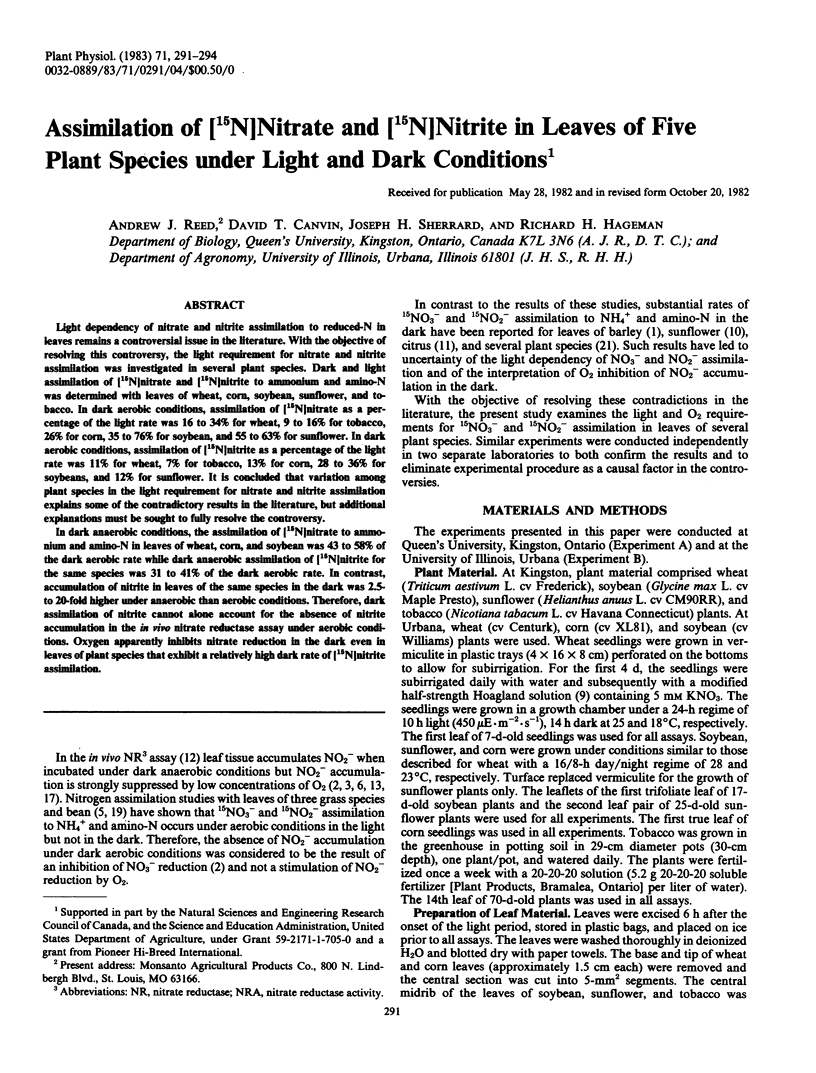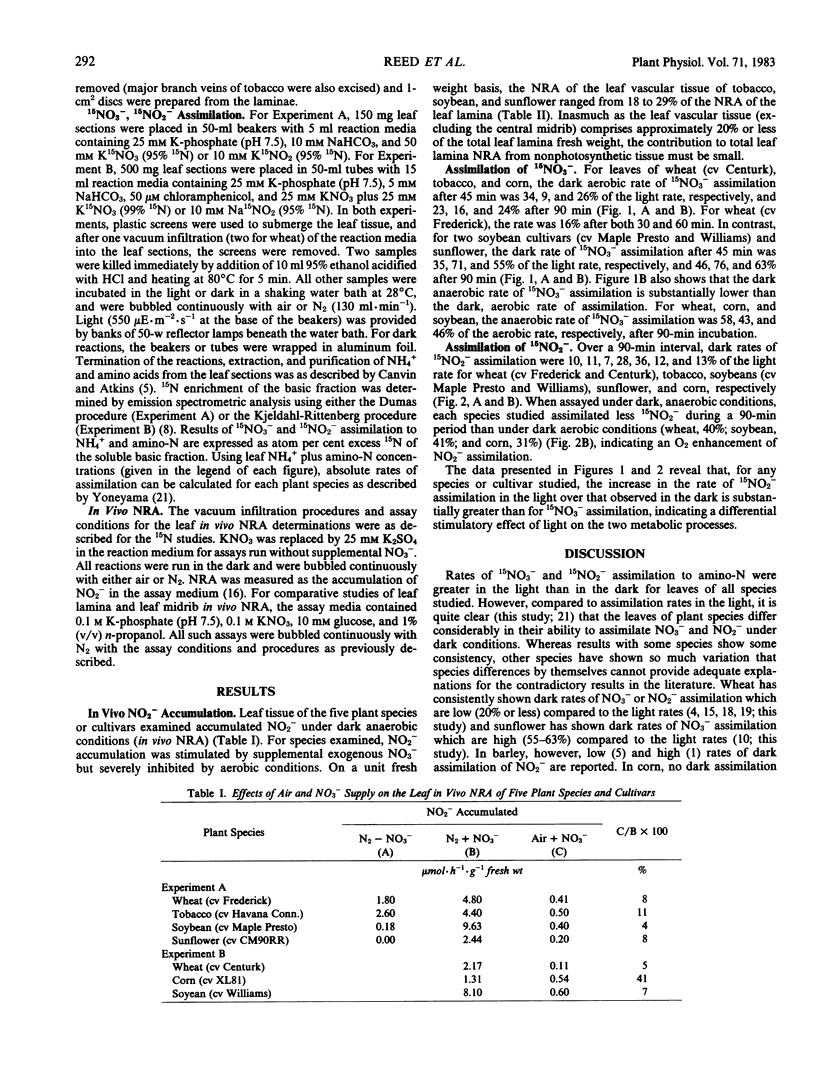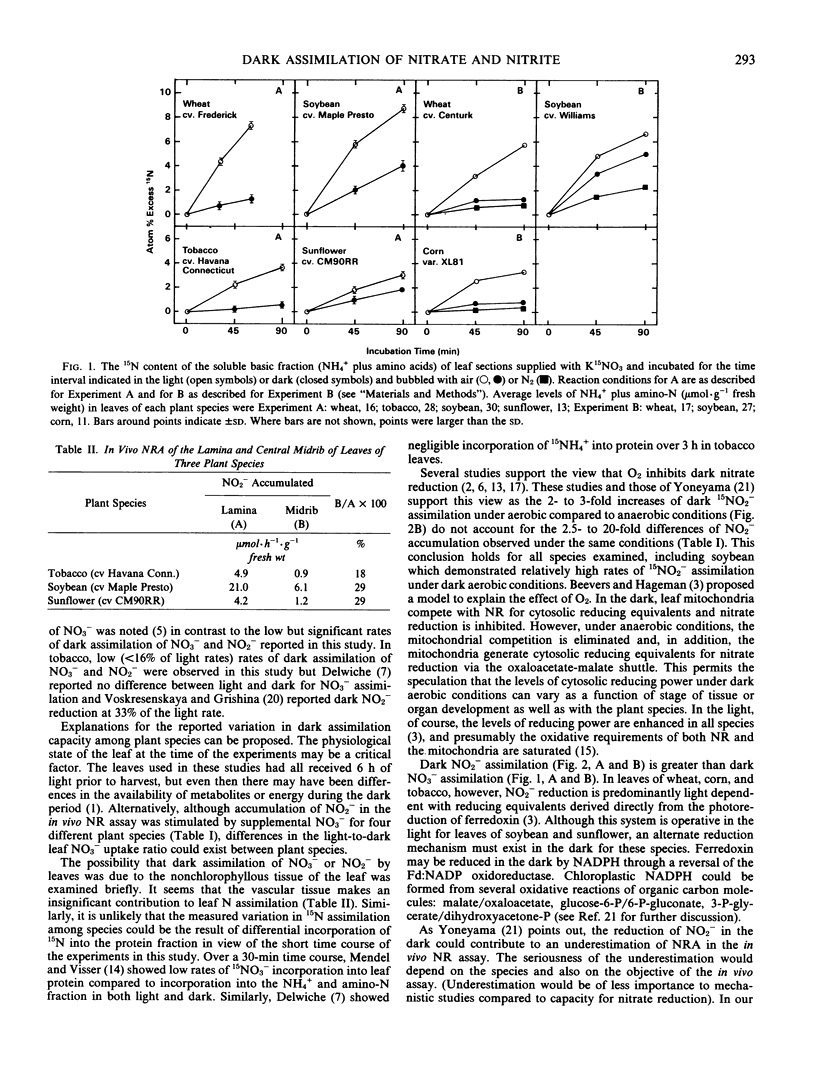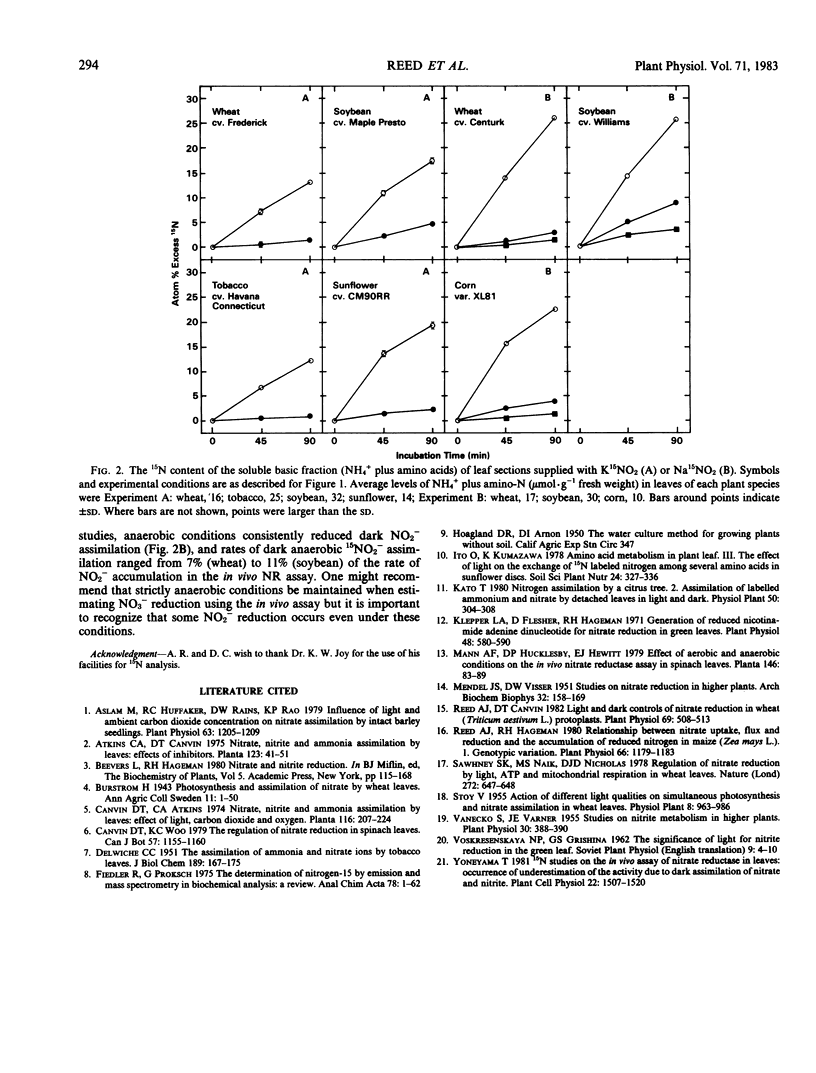Abstract
Light dependency of nitrate and nitrite assimilation to reduced-N in leaves remains a controversial issue in the literature. With the objective of resolving this controversy, the light requirement for nitrate and nitrite assimilation was investigated in several plant species. Dark and light assimilation of [15N]nitrate and [15N]nitrite to ammonium and amino-N was determined with leaves of wheat, corn, soybean, sunflower, and tobacco. In dark aerobic conditions, assimilation of [15N]nitrate as a percentage of the light rate was 16 to 34% for wheat, 9 to 16% for tobacco, 26% for corn, 35 to 76% for soybean, and 55 to 63% for sunflower. In dark aerobic conditions, assimilation of [15N]nitrite as a percentage of the light rate was 11% for wheat, 7% for tobacco, 13% for corn, 28 to 36% for soybeans, and 12% for sunflower. It is concluded that variation among plant species in the light requirement for nitrate and nitrite assimilation explains some of the contradictory results in the literature, but additional explanations must be sought to fully resolve the controversy.
In dark anaerobic conditions, the assimilation of [15N]nitrate to ammonium and amino-N in leaves of wheat, corn, and soybean was 43 to 58% of the dark aerobic rate while dark anaerobic assimilation of [15N]nitrite for the same species was 31 to 41% of the dark aerobic rate. In contrast, accumulation of nitrite in leaves of the same species in the dark was 2.5-to 20-fold higher under anaerobic than aerobic conditions. Therefore, dark assimilation of nitrite cannot alone account for the absence of nitrite accumulation in the in vivo nitrate reductase assay under aerobic conditions. Oxygen apparently inhibits nitrate reduction in the dark even in leaves of plant species that exhibit a relatively high dark rate of [15N]nitrite assimilation.
Full text
PDF



Selected References
These references are in PubMed. This may not be the complete list of references from this article.
- Aslam M., Huffaker R. C., Rains D. W., Rao K. P. Influence of light and ambient carbon dioxide concentration on nitrate assimilation by intact barley seedlings. Plant Physiol. 1979 Jun;63(6):1205–1209. doi: 10.1104/pp.63.6.1205. [DOI] [PMC free article] [PubMed] [Google Scholar]
- DELWICHE C. C. The assimilation of ammonium and nitrate ions by tobacco plants. J Biol Chem. 1951 Mar;189(1):167–175. [PubMed] [Google Scholar]
- Klepper L., Flesher D., Hageman R. H. Generation of reduced nicotinamide adenine dinucleotide for nitrate reduction in green leaves. Plant Physiol. 1971 Nov;48(5):580–590. doi: 10.1104/pp.48.5.580. [DOI] [PMC free article] [PubMed] [Google Scholar]
- MENDEL J. L., VISSER D. W. Studies on nitrate reduction in higher plants. I. Arch Biochem Biophys. 1951 Jun;32(1):158–169. doi: 10.1016/0003-9861(51)90249-4. [DOI] [PubMed] [Google Scholar]
- Reed A. J., Canvin D. T. Light and Dark Controls of Nitrate Reduction in Wheat (Triticum aestivum L.) Protoplasts. Plant Physiol. 1982 Feb;69(2):508–513. doi: 10.1104/pp.69.2.508. [DOI] [PMC free article] [PubMed] [Google Scholar]
- Reed A. J., Hageman R. H. Relationship between Nitrate Uptake, Flux, and Reduction and the Accumulation of Reduced Nitrogen in Maize (Zea mays L.): I. GENOTYPIC VARIATION. Plant Physiol. 1980 Dec;66(6):1179–1183. doi: 10.1104/pp.66.6.1179. [DOI] [PMC free article] [PubMed] [Google Scholar]
- Vanecko S., Varner J. E. Studies on Nitrite Metabolism in Higher Plants. Plant Physiol. 1955 Jul;30(4):388–390. doi: 10.1104/pp.30.4.388. [DOI] [PMC free article] [PubMed] [Google Scholar]


